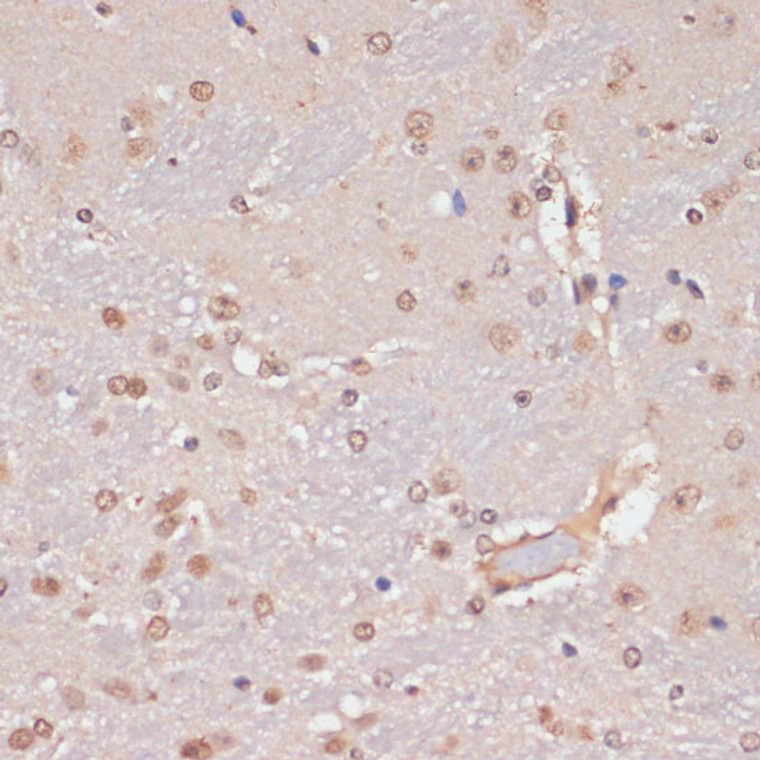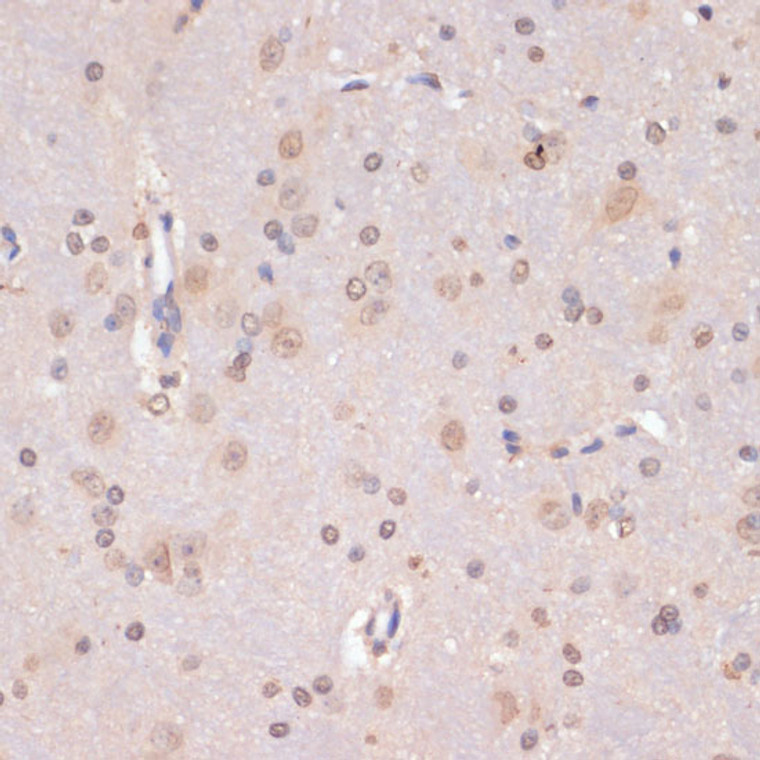| Host: |
Rabbit |
| Applications: |
WB/IHC/IF |
| Reactivity: |
Human/Mouse/Rat |
| Note: |
STRICTLY FOR FURTHER SCIENTIFIC RESEARCH USE ONLY (RUO). MUST NOT TO BE USED IN DIAGNOSTIC OR THERAPEUTIC APPLICATIONS. |
| Short Description: |
Rabbit polyclonal antibody anti-PIDD (1-85) is suitable for use in Western Blot, Immunohistochemistry and Immunofluorescence research applications. |
| Clonality: |
Polyclonal |
| Conjugation: |
Unconjugated |
| Isotype: |
IgG |
| Formulation: |
PBS with 0.02% Sodium Azide, 50% Glycerol, pH7.3. |
| Purification: |
Affinity purification |
| Dilution Range: |
WB 1:500-1:1000IHC-P 1:50-1:200IF/ICC 1:50-1:100 |
| Storage Instruction: |
Store at-20°C for up to 1 year from the date of receipt, and avoid repeat freeze-thaw cycles. |
| Gene Symbol: |
PIDD1 |
| Gene ID: |
55367 |
| Uniprot ID: |
PIDD1_HUMAN |
| Immunogen Region: |
1-85 |
| Immunogen: |
Recombinant fusion protein containing a sequence corresponding to amino acids 1-85 of human PIDD (NP_665893.2). |
| Immunogen Sequence: |
MAATVEGPELEAAAAAGDAS EDSDAGSRALPFLGGNRLSL DLYPGGCQQLLHLCVQQPLQ LLQVEFLRLSTHEDPQLLEA TLAQL |
| Tissue Specificity | Ubiquitous. |
| Post Translational Modifications | Undergoes autoproteolytic processing whose extent either directs cells towards survival or apoptotic pathways. Autoproteolytically cleaved into two main fragments PIDD-N and PIDD-C. PIDD-C can be further processed into PIDD-CC, a processing which is enhanced by DNA damage. The cleavage producing PIDD-C is required for translocation of PIDD1 to the nucleus upon DNA damage and activation of NF-kappa-B. PIDD-CC mediates the interaction with CRADD and the cleavage producing PIDD-CC is required for the activation of CASP2. PIDD-N remains associated with PIDD-C and PIDD-CC after cleavage. |
| Function | Component of the DNA damage/stress response pathway that functions downstream of p53/TP53 and can either promote cell survival or apoptosis. Associated with CRADD and the CASP2 caspase, it forms the PIDDosome a complex that activates CASP2 and triggers apoptosis. Associated with IKBKG and RIPK1, it enhances sumoylation and ubiquitination of IKBKG which is important for activation of the transcription factor NF-kappa-B. |
| Protein Name | P53-Induced Death Domain-Containing Protein 1Leucine-Rich Repeat And Death Domain-Containing Protein Cleaved Into - Pidd-N - Pidd-C - Pidd-Cc |
| Database Links | Reactome: R-HSA-6803207 |
| Cellular Localisation | CytoplasmNucleusEnriched In The Nucleus Upon Dna Damage |
| Alternative Antibody Names | Anti-P53-Induced Death Domain-Containing Protein 1 antibodyAnti-Leucine-Rich Repeat And Death Domain-Containing Protein Cleaved Into - Pidd-N - Pidd-C - Pidd-Cc antibodyAnti-PIDD1 antibodyAnti-LRDD antibodyAnti-PIDD antibody |
Information sourced from Uniprot.org
12 months for antibodies. 6 months for ELISA Kits. Please see website T&Cs for further guidance











